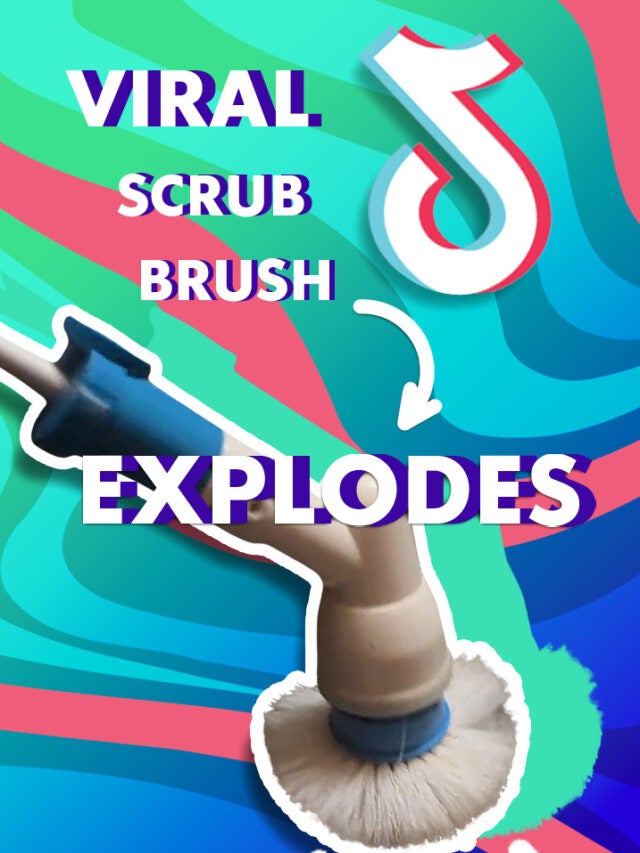
Outdoor cleaning can be a rewarding experience, leaving your patio, deck, or driveway looking sparkling new. But wielding a powerful outdoor scrub brush, especially a motorized one, comes with its own set of potential hazards. Ignoring safety precautions can lead to injuries ranging from minor scrapes and strains to serious sprains and even fractures. This guide will walk you through the essential safety measures to ensure you enjoy a clean space and a healthy body.
Understanding the Torque Factor: The Unsung Hero of Safe Scrubbing
Before we dive into specific safety tips, let’s talk about torque. For those unfamiliar, torque is the rotational force that an engine produces. In the context of an outdoor scrub brush, higher torque translates to greater cleaning power – but it also means more potential for injury if not handled properly. A brush with high torque can easily get away from you if you’re not prepared, especially when tackling stubborn grime. Look for brushes with adjustable torque settings, allowing you to match the power to the task at hand. Less powerful settings are usually sufficient for lighter cleaning jobs, minimizing the risk of accidents.
Engine Options: Gas vs. Electric – A Safety Perspective
Choosing the right engine type for your outdoor scrub brush is crucial for both efficiency and safety. Gas-powered brushes typically offer more raw power and longer run times, but they also come with added safety concerns. Gas engines produce fumes, requiring good ventilation, and they can be heavier and more cumbersome, increasing the chance of strain and fatigue. Electric scrub brushes, on the other hand, are generally lighter, quieter, and emission-free, reducing the risk of both physical and environmental hazards. However, their power may be limited by battery life and charging requirements.
Torque and Towing Specs: Deciphering the Numbers
The specifications of your scrub brush should always be carefully considered. Torque is often measured in foot-pounds (ft-lb) or Newton-meters (Nm). A higher number indicates greater power. However, don’t automatically assume higher is better. Consider the surface you’ll be cleaning. A high-torque brush is excellent for heavy-duty jobs like removing stubborn stains from concrete, but it might be overkill (and potentially dangerous) for delicate surfaces like wood or brick. Similarly, towing capacity (if applicable) plays a role if you’re using a larger, trailer-mounted brush. Ensure the towing capacity of your vehicle matches or exceeds the brush’s weight, and use appropriate safety chains and hitches.
Comparing Competitors: Safety Features to Look For
When choosing a scrub brush, compare models based on their safety features. Look for features like:
- Emergency stop switch: A readily accessible button that instantly shuts off the engine.
- Safety guards or shrouds: These protect your hands and body from rotating brushes and other moving parts.
- Ergonomic handle design: A comfortable grip reduces strain and fatigue, improving control and reducing the risk of dropping or misusing the equipment.
- Non-slip feet or wheels: This enhances stability, especially on uneven surfaces, preventing accidental slips and falls.
- Clear instructions and warnings: Make sure the manufacturer provides comprehensive instructions on safe operation and maintenance.
Compare the specifications of several models, reading online reviews to assess real-world experiences and potential safety issues reported by other users.
Practical Advice for Safe Scrubbing: Step-by-Step Guide
Regardless of the model you choose, consistently following safe practices is paramount. Here’s a step-by-step guide:
- Inspect the equipment: Before starting, carefully check the brush for any damage, loose parts, or worn components. Do not operate a damaged brush.
- Wear appropriate personal protective equipment (PPE): This includes sturdy gloves to protect your hands, safety glasses to shield your eyes from debris, and closed-toe shoes to protect your feet.
- Start slow: Begin at a low speed to get a feel for the brush’s power and handling. Gradually increase the speed as needed.
- Maintain a firm grip: Always maintain a secure and controlled grip on the handle. Avoid using excessive force. Let the brush do the work.
- Be aware of your surroundings: Keep a clear workspace free of obstacles and tripping hazards. Watch out for pets and children.
- Take breaks: Avoid prolonged use. Take regular breaks to rest and prevent fatigue, which can lead to accidents.
- Store properly: After use, store the brush in a safe, dry place, away from children and pets.
Addressing Common Injuries
Even with precautions, accidents can happen. Common injuries associated with outdoor scrub brushes include:
- Back pain: From awkward posture or excessive force.
- Hand and wrist injuries: From repetitive movements or vibration.
- Eye injuries: From debris flung by the rotating brush.
- Cuts and abrasions: From contact with the brush or sharp objects.
If you experience any injury, seek medical attention if necessary. Remember, prevention is always better than cure. By following these safety guidelines, you can significantly reduce your risk of injury and enjoy a cleaner outdoor space without compromising your well-being.
Conclusion
Using an outdoor scrub brush can be a highly efficient way to clean your outdoor areas. By understanding torque, choosing the right engine type, and following safety procedures meticulously, you can effectively minimize the risk of injury and enjoy a clean and safe working environment. Remember, safety should always be your top priority when tackling any cleaning task.



